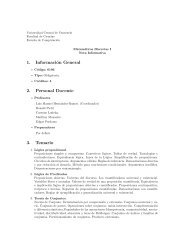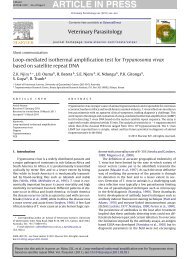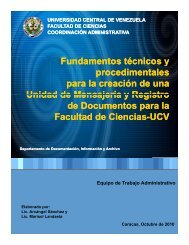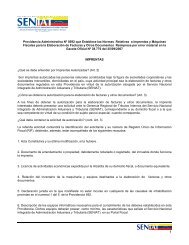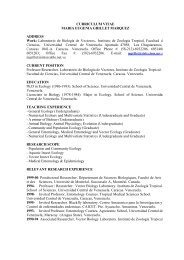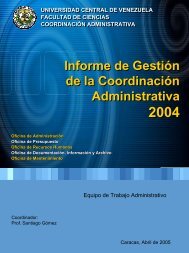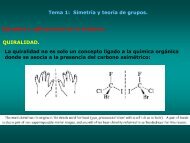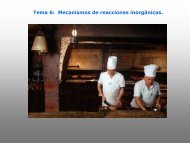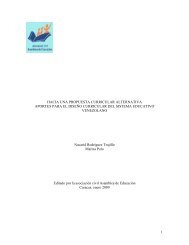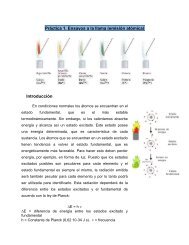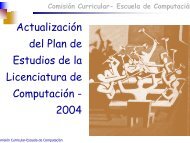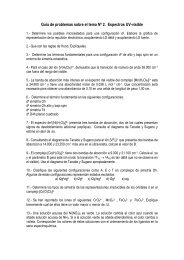Collecting and Preserving
Collecting and Preserving
Collecting and Preserving
- No tags were found...
You also want an ePaper? Increase the reach of your titles
YUMPU automatically turns print PDFs into web optimized ePapers that Google loves.
with minuten through the thorax with left side of specimenpositioned toward main pin. Note that minuten is vertical,which is more advantageous than if it were horizontalbecause specimen is less liable to come into contact withfingers or pinning forceps. Placing a small amount of glueon tip of minuten before piercing specimen will help holdsoft-bodied insects.(3) Small wasps <strong>and</strong> flies (not freshly killed)—Mount on unbent card point with point inserted betweencoxae on right side of insect, keeping clear of midline, orglue tip of point to mesopleuron or laterally on a card (fig.22).(4) Small beetles, bugs, leafhoppers, <strong>and</strong> most othersmall insects—Glue card point with tip truncated or bentdown to right side of specimen.As to the length of pin exposed above the specimen,double mounts should conform to the same rule as indirect pinning: Do not place a double mount too high onthe pin. It must be possible to grasp the head of the pinbetween the thumb <strong>and</strong> index finger without touching thespecimen. Uniform height may be obtained by using asimple measuring device such as a three-step block prior tomounting the specimen (fig. 18). Double-mount cubes orpoints may be adjusted at any time, whereas once adirectly pinned insect has dried on a pin, it is virtuallyimpossible to move it without damage. If points becomeloose on the main pin, place a little adhesive at theconnection.Reference: Borgmeier 1964.3.5 - Spreading Boards <strong>and</strong> BlocksAll insects preserved with the wings spread uniformlyare set <strong>and</strong> dried in this position on spreadingboards or blocks (fig. 24); spreading boards are morecommonly used than spreading blocks. Although suchpinning aids vary greatly in design, the same basicprinciple is inherent in all, that is, a smooth surface onwhich the wings are spread <strong>and</strong> positioned horizontally; acentral, longitudinal groove for the body of the insect; <strong>and</strong>a layer of soft material into which the pin bearing theinsect is inserted to hold the specimen at the proper height.An active collector will need from several to manyspreading boards because the insects must dry for aconsiderable time (about 2 weeks for large specimens, oneweek for small ones) before being removed from theboards. Spreading boards may be purchased from biologicalsupply houses or may easily be made as described hereif the proper materials can be obtained. When purchasingspreading boards, avoid (1) too hard or too soft a materialfor the pinning medium under the central groove, (2) toohard an upper pinning surface, <strong>and</strong> (3) top pieces withoutTechniques <strong>and</strong> Toolsthe same thickness at the center (an especially commonfault in beveled boards). This last defect may be correctedby s<strong>and</strong>ing down the higher side; evenness is especiallycritical when working with small specimens.3.5.1 - Construction of Spreading Boards.A spreading board of simple design (fig. 25)requires the following materials:(A) Two top pieces, 9 mm by 4.8 cm by 38 cm,preferably of seasoned basswood, a fine-grained, durablewood from trees of the genus Tilia. Holes made in it byinsect pins tend to close after they are removed. If thesurface of the board is lightly s<strong>and</strong>ed after use, especiallywhen working with small specimens, its smooth, evenquality can be maintained through many years of use.Basswood is sometimes known as ‘whitewood’; however,wood from trees of the genus Liriodendron is also soldunder this name. If basswood cannot be obtained, wellseasonedwhite pine selected for softness <strong>and</strong> ‘pinability’is serviceable. A third choice is 20- cm (8-inch) beveledredwood siding. Beveled top pieces are desirable becausethe beveling, sloping inward, compensates for the tendencyof the wings of spread specimens to droop slightlyafter the specimens are removed from the board. The 20-cm siding is actually 19.1 cm wide, <strong>and</strong> a 0.9- meter pieceof it will provide two pairs of top pieces. One pair cutslightly more than 4.8 cm wide from the wide side of theboard <strong>and</strong> planed to exact width will make a pair 11 mmthick at the narrow side, <strong>and</strong> another pair cut from thesame side of the board will provide a second pair about 8mm thick at the narrow side. Redwood is stiff <strong>and</strong> finegrained, but it splits <strong>and</strong> splinters easily.(B) Two end pieces of any good, fine-grained wood,2 cm square by 10 cm.(C) One strip of entomological or gasket cork orfoam, 6 mm by 3 cm by 34 cm.Fig. 26. A small speading block.35



